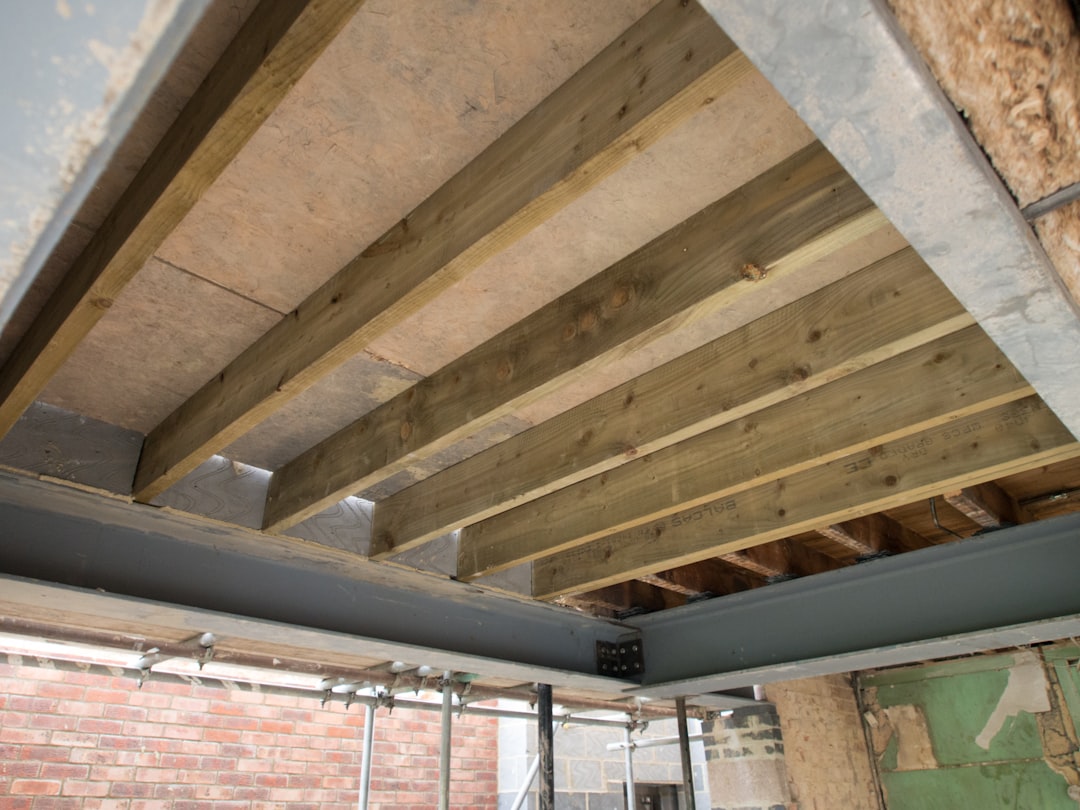

Engage prospects with a scan and streamline customer engagement with FREE QR code marketing tools by Sona – no strings attached!
Create a Free QR CodeFree consultation

No commitment

Engage prospects with a scan and streamline customer engagement with FREE QR code marketing tools by Sona – no strings attached!
Create a Free QR CodeFree consultation

No commitment
The construction industry is undergoing profound transformation, driven by a demand for sustainability, process efficiency, and measurable business results. Insulated concrete form contractors sit at the intersection of these priorities. ICF solutions continue to gain traction because they deliver superior energy efficiency, reduced air infiltration, and impressive structural performance that meets or exceeds modern codes. To see the broader market context, review recent ICF market trends. Yet as market interest grows, contractors still face hurdles converting offline inquiries at job sites, trade shows, and showrooms into timely digital actions such as quote requests, design consults, or downloadable resources.
The biggest friction point is often the leap from physical touchpoints to online engagement. A walk-up conversation with a superintendent, a glance at a project board, or grabbing a brochure can all signal high interest, but without a simple path to act, intent goes unmeasured and unclaimed. QR technology closes this gap by making every sign, brochure, or vehicle wrap a portal to education, scheduling, and lead capture. By turning static materials into interactive gateways, ICF contractors can surface buyer intent in real time, guide prospects to the next best step, and feed qualified leads into their CRM for fast follow-up.
Adopting QR codes across the customer journey does more than modernize marketing. It delivers operational visibility, data-driven prioritization, and a better client experience. Whether your goal is educating first-time ICF buyers, streamlining preconstruction conversations, or accelerating design-build engagement, QR codes give you the connective tissue that unifies offline interest with measurable online action.

For ICF contractors, a common frustration is watching interest evaporate when a potential client leaves a jobsite or booth without taking the next step. Printed brochures, manual sign-up sheets, and generic contact pages rarely match the immediacy of in-person interest. QR codes fix this by making it simple for any prospect to scan and take action in seconds, even from a sidewalk, lift, or back row at a lunch-and-learn.
Replace analog bottlenecks with digital clarity. Swap paper brochures that date quickly for dynamic content hubs. Move beyond untracked business cards with vCards that save directly into a prospect’s phone. Turn clipboards and paper forms into mobile-optimized digital forms that route to the right salesperson with context. The key is to map each physical touchpoint to a specific action and measure the performance from scan to submission.
Effective implementation involves:
Today’s QR and lead management platforms make this easy to operationalize. With a solution like Sona QR, you can create dynamic codes, update destinations without reprinting, analyze performance by location and device, and sync scan events to your CRM or marketing automation tools. This replaces manual, paper-bound processes with real-time engagement that accelerates pipeline.

ICF contractors often market in physical environments: jobsites, building centers, home shows, and lunch-and-learns. Prospects gather information quickly and move on. Without an instant bridge from offline contact to digital action, these interactions vanish. QR codes are purpose-built for this reality. They let prospects act in the moment and they give contractors attribution they never had before.
Printed catalogs, static sell sheets, and code compliance handouts become stale or misplaced. QR-enabled materials solve this by linking to living content that you can update monthly or even weekly. If your cost comparison tool, rebate information, or engineering resource gets updated, you can change the destination on a dynamic code and keep every printed asset relevant.
Applied to everyday assets like appointment cards, proposal packets, plan room handouts, and display boards, QR codes create a measurable path from interest to action that fits the on-the-go reality of construction buyers.

QR codes come in several formats, and each can be matched to a moment in your buyer’s journey. For ICF contractors, the most valuable formats tend to be those that eliminate friction at the point of interest and those that streamline follow-up by capturing complete contact details or routing to specific tools.
Use dynamic QR codes whenever you want analytics, the ability to update destinations, or campaign-level controls. Use static codes for evergreen contact information or signage that must never change. A well-planned mix gives you flexibility without sacrificing reliability.
Dynamic codes managed through a platform like Sona QR give you a single pane of glass to create, tag, update, and analyze every format you deploy.

Many ICF contractors already invest in visible touchpoints, but they do not harvest the full value because those touchpoints are not connected to a measurable next step. The opportunities below convert existing visibility into a lead capture engine that continually improves through data.
Start with your highest-traffic assets. Instrument them with clear calls to action and unique QR codes so you can see which placements are most effective. As you learn, double down on the winners and rethink or redesign the underperformers.
ICF adoption often starts with education and proof. Buyers want to understand comparative costs, energy performance, and schedule implications. Smart QR deployments remove friction at these moments so prospects take the next step while their questions are fresh.
Use cases should map to a clear business objective such as increasing RFQs, shortening time-to-consult, or boosting education for architects and code officials. Start with three to five use cases that match your most frequent interactions, then expand as you learn.
Every QR scan captures context that helps you understand intent. With unique codes per placement and content type, you can segment audiences automatically and tailor follow-up that matches buyer motivation. This reduces noise for your sales team and improves conversion throughout the funnel.
ICF contractors can segment by role and interest. For example, homeowners scanning an energy savings guide need a different nurture path than architects scanning engineering details or developers scanning schedule comparisons. Use your QR taxonomy to reflect these distinctions so your messaging feels relevant.
With Sona QR, each code can carry attributes and rules that flow into your systems. That data lets you retarget based on behavior rather than assumptions, improving both speed and relevance of your follow-ups.
Disconnected campaigns waste resources and confuse prospects. QR codes knit channels together by giving every physical asset a digital destination and every scan a data trail. This results in consistent messaging, faster response times, and attribution across tactics that were once hard to measure.
Think of QR codes as the onramp to your digital marketing engine. When every brochure, banner, and truck panel sends prospects to a cohesive experience with trackable actions, you get clarity on what works and why.
Centralize creation, tagging, and analytics in a platform like Sona QR so your team can monitor performance across channels, update content fast, and keep sales informed with actionable data.
Rolling out QR across your marketing and operations does not need to be complex. A structured plan aligns goals, creative, placements, and measurement so you learn quickly and scale what works. Treat your first campaign as a pilot that proves value and sets standards for future deployments.
Start small, create measurable hypotheses, and commit to refining both destination content and placements over a 30 to 60 day window. Use what you learn to standardize best practices that field teams and marketing can repeat.
Close your first campaign by documenting what worked and what needs refinement. Then expand to additional placements and use cases, carrying forward your taxonomy, design system, and measurement standards.
Many contractors measure impressions and conversations, but struggle to tie those activities to pipeline and revenue. QR codes fix the last mile of offline attribution by connecting a specific physical asset to a specific action and then to CRM outcomes. This enables you to invest where returns are highest.
Go beyond counting scans. Track the full sequence from scan to form completion to meeting booked to proposal issued to deal closed. Attribute revenue back to the placements that initiated the journey. Over time, you will see which jobsite signs, brochures, and vehicle wraps consistently generate high-quality opportunities.
Sona QR captures detailed scan data including time, device, and location. Combined with Sona.com, you can enrich leads, resolve identities when possible, and assign revenue back to QR-influenced paths. This lets you treat QR not just as a convenience but as a core part of performance marketing.
QR success depends on usability, relevance, and follow-through. The best results come from pairing clear CTAs with fast, mobile-optimized destinations and routing scan events into automated workflows. With that foundation in place, ongoing testing and staff enablement multiply your gains.
Field teams are often your best ambassadors. Train superintendents and sales reps to reference the code and invite scans during walk-throughs. Incentivize staff to convert in-person curiosity into measurable actions that marketing can nurture.
ICF contractors compete in a market that rewards speed, clarity, and measurable outcomes. QR codes deliver all three. They turn every physical touchpoint into a digital conversion point, give you attribution where you had none, and equip your team to respond while interest is hot. The result is a better buyer experience and a healthier pipeline.
A strategic, analytics-driven QR program empowers ICF specialists to:
Adopt QR codes as part of your standard operating model, not a one-off experiment. Start with a focused use case, measure rigorously, and expand to the placements that shape your day-to-day interactions. With Sona QR you can generate dynamic codes, manage destinations, track performance, and connect scans to CRM and revenue. That foundation lets you turn invisible interest into visible pipeline, then refine your approach with each campaign until every print asset and jobsite surface contributes meaningfully to growth. Start creating QR codes for free.
QR codes have transformed insulated concrete form contractors from relying on traditional, static information sharing to leveraging dynamic, measurable communication tools. Whether it’s streamlining project documentation access, enhancing client interactions, or providing instant technical resources on-site, QR codes replace cumbersome processes with quick, mobile-friendly solutions that capture real-time engagement and turn every scan into actionable insight.
Imagine your clients instantly accessing installation guides, warranty details, or personalized project updates right from their smartphones—boosting trust and satisfaction while accelerating decision-making. With Sona QR, you can create dynamic, trackable QR codes in seconds, update information on the fly without costly reprints, and link every scan directly to business growth and client retention.
Start for free with Sona QR today and transform how your contracting business connects, communicates, and converts every interaction into a lasting opportunity.
Insulated concrete forms deliver superior energy efficiency, reduced air infiltration, and strong structural performance that meets or exceeds modern building codes.
ICF solutions offer competitive cost advantages that can be explored through interactive cost comparison tools, which help overcome first-cost concerns by showing personalized summaries.
The construction process with ICFs involves integrating insulated concrete form systems that improve energy performance while meeting code requirements, supported by tools such as project consultations and digital resources for efficient planning.
You can locate reputable ICF contractors by engaging through jobsite signage, trade shows, building centers, or digital platforms that use QR codes to connect prospects with qualified contractors and schedule consultations.
Insulated concrete forms reduce energy consumption through enhanced insulation and air sealing, contributing to sustainability and lower environmental impact in building construction.
QR codes transform physical touchpoints into interactive gateways that surface buyer intent in real time, guide prospects to next steps, and feed qualified leads into CRM systems for fast follow-up.
Dynamic QR codes are ideal for trackable, updateable links like campaign pages and educational hubs, while static QR codes work well for evergreen contact information and permanent signage.
High-impact placements include jobsite signage, vehicle wraps, trade show booths, brochures, building center displays, and direct mail to convert visibility into measurable leads.
Success is measured by tracking metrics like scan-to-form completion rates, increases in RFQs, conversion from event scans, and integration of scan data with CRM for attribution and pipeline impact.
Contractors should define clear business goals, choose the right QR code type, design scannable codes with strong calls to action, deploy codes on key channels, and track and optimize performance continuously.
QR codes enable prospects to take immediate digital actions from offline touchpoints like jobsite visits and brochures, reducing lost interest and creating measurable engagement signals.
Yes, dynamic QR codes allow destinations to be updated anytime without reprinting materials, ensuring prospects always access the most current resources and information.
By assigning unique QR codes and tags by buyer role and interest, contractors can segment audiences and tailor follow-up communications to match specific motivations and needs.
QR codes provide operational visibility, data-driven prioritization, faster lead follow-up, and a better client experience through seamless digital engagement from offline interactions.
QR codes unify print collateral, events, direct mail, social media, and digital ads by linking physical assets to trackable online destinations, enabling consistent messaging and measurable results.
Use Sona QR's trackable codes to improve customer acquisition and engagement today.
Create Your FREE Trackable QR Code in SecondsJoin results-focused teams combining Sona Platform automation with advanced Google Ads strategies to scale lead generation

Connect your existing CRM

Free Account Enrichment

No setup fees
No commitment required

Free consultation

Get a custom Google Ads roadmap for your business






Launch campaigns that generate qualified leads in 30 days or less.
